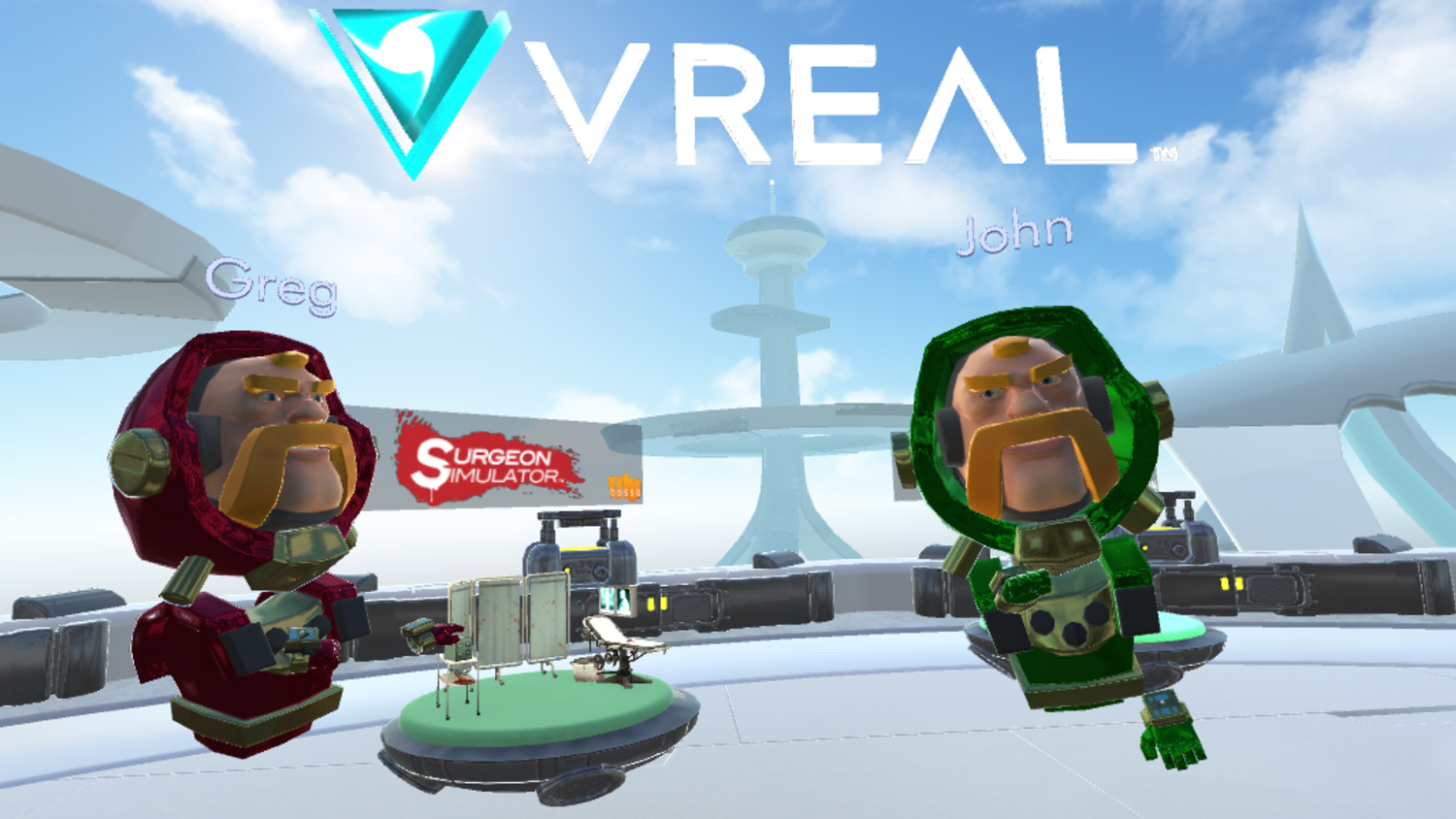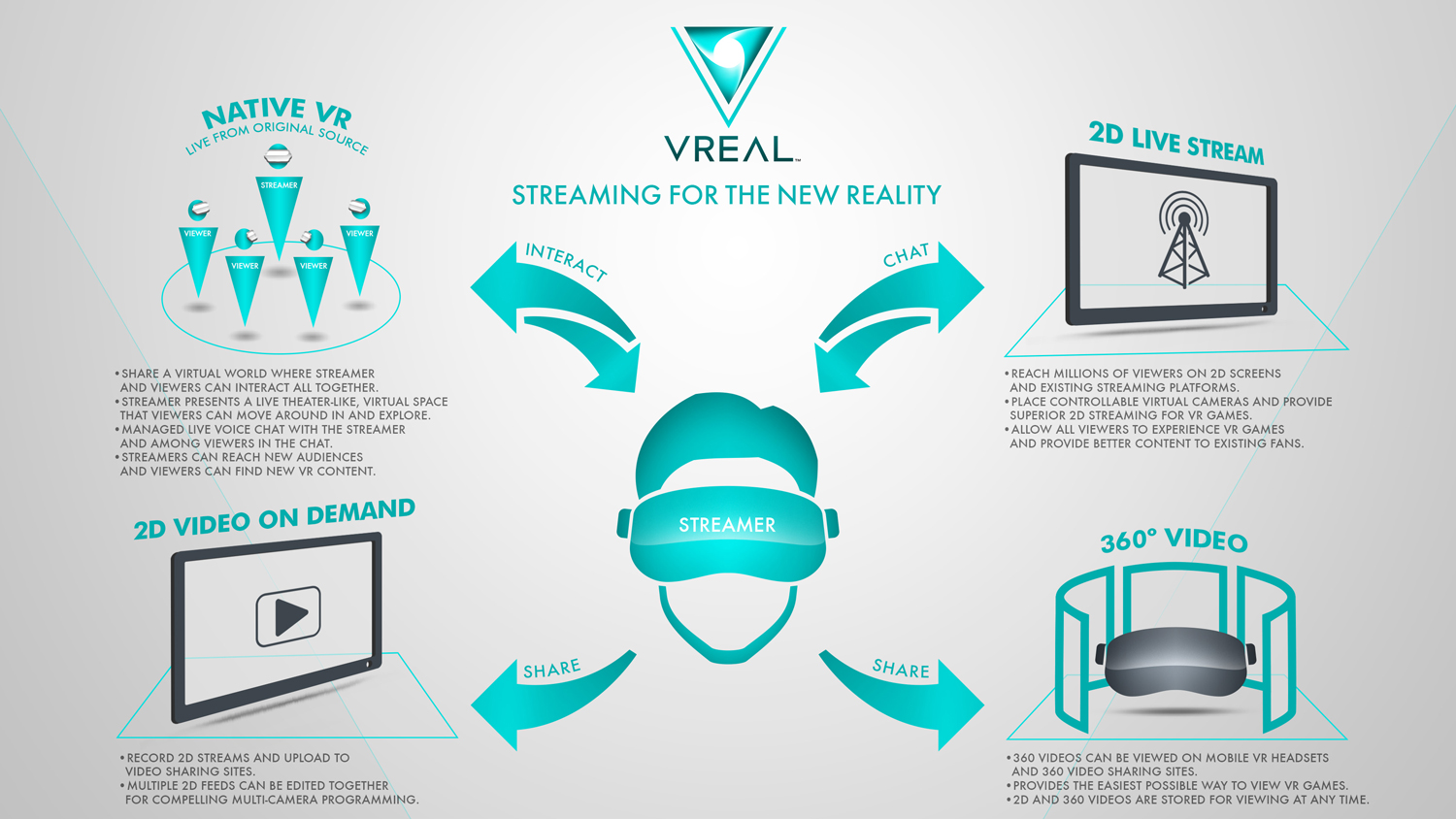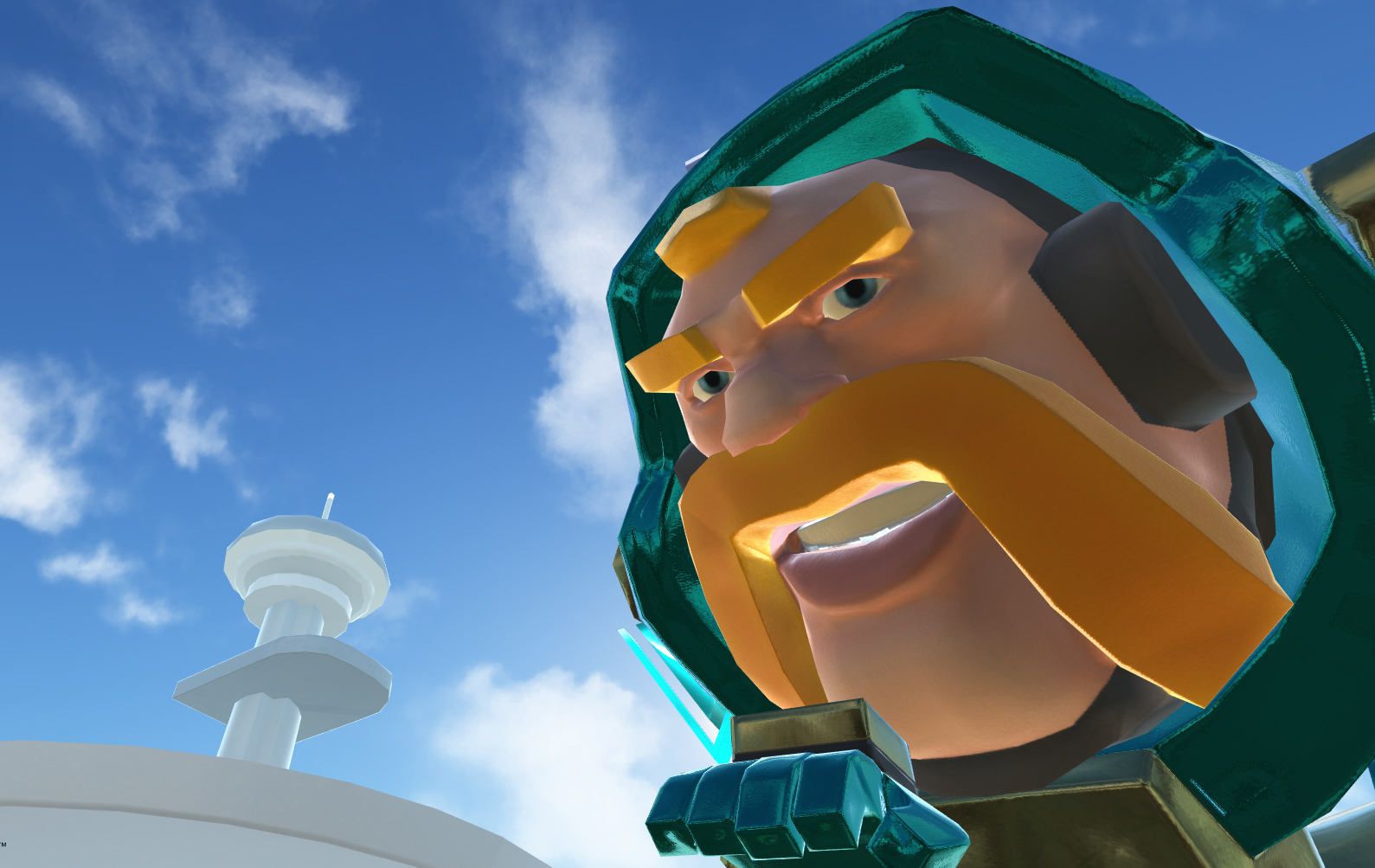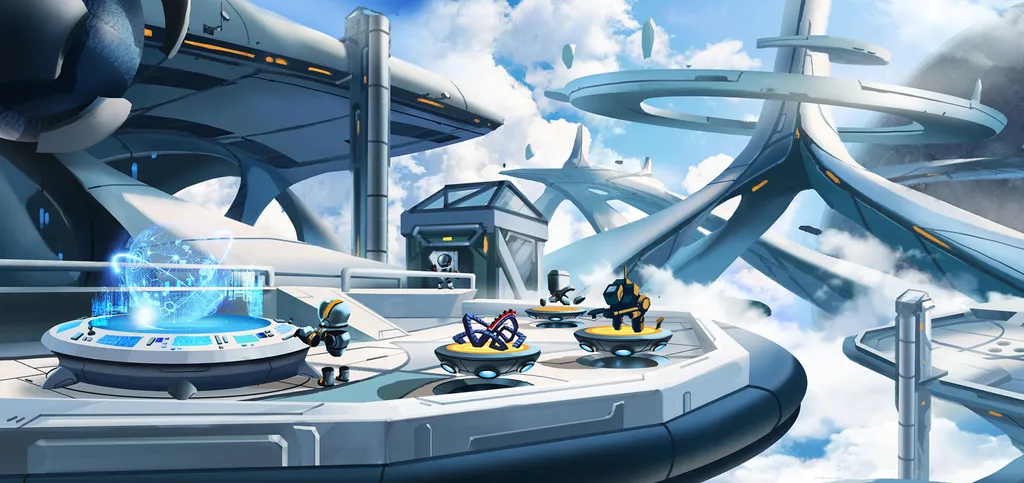When Justin Kan and Emmett Shear first started Twitch in 2011, the idea of ‘games as entertainment’ was novel – five years later it is anything but. In the years since the platform has exploded to the tune of 100 million unique users a month as eSports have become so big they are being looked at as a potential category in the 2020 Olympics. But as we turn to the world of virtual reality gaming, the needs for both streamers and viewers change entirely.
As many have pointed out, virtual reality is a difficult medium to convey with traditional means as a 2D window does not come close to portraying what it is like to be inside of the headset.
We have seen a number of interesting solutions crop up from steady-cam arms attached to headsets to mixed reality. However the only way to really experience virtual reality, is to be within virtual reality yourself – and it was that line of thought that lead a small team in Seattle to band together to create VReal, a Twitch-like platform that brings a spectator presence to VR.
VReal, which is currently in beta, looks to take the idea of ‘Twitch in VR’ and “multiply it by a million,” according to the platform’s lead engineer Keith Bradner. Where as Twitch broadcasts to a traditional 2D medium, VReal allows you to actually step inside a mirrored instance of the experience, meaning that you and “ten of your closest friends” can step inside the game with someone who is streaming their gameplay.
I had a chance to demo the platform earlier this week and was blown away by how polished it already is after only a year of development. For my demo I was shown how the experience works through three titles: Surgeon Simulator VR, Cloudlands Minigolf, and a third title called “VR Legends” meant to showcase what a MOBA like League of Legends might look like on this platform.

At the beginning you are greeted with a home area with dioramas of the games that are available for streaming. Teleporting over to one you can select from the streams available, and hop into the world solo or with a group of friends. The demo I was shown showcased a prerecorded scene, complete with the game appropriate avatar of the streamer who narrated the experience, but according to VReal’s founder and CEO, Todd Hooper, live streaming will definitely be a part of the app’s public beta this summer.
Teleporting inside one of the streams, you are able to move freely within the game environment, independent from the streamer – whose voice is broadcast as narration, rather than positionally placed (for clarity). Beyond darting around the map in full room scale, VReal also gives you the option to have multiple perspectives on the scene. For example, in the VReal’s MOBA tech demo you begin from a god view perspective of the battlefield however if you teleport onto one of the stages in the environment you can shrink yourself down to scale with the individual fights, giving you multiple perspectives on the action.
The result is the type of streamed VR experience I have been looking for, one that exists truly in virtual reality, and adds new life to the experience as a whole.

VReal works by integrating an SDK into the game’s engine. Once integrated, a streamer will be able to broadcast their game by sending it up to a cloud server, which sends the scene to be rendered in realtime on the viewer’s PC or outputted to 360-degree 3D video for mobile VR, or even a traditional 2D stream for everyone else; the result being a platform that maximizes both the reach of a VR stream and its functionality.
One of the things that led to Twitch’s rise is the ability for streamers to interact directly with their fans through a chat window, but text chat and VR aren’t good friends so Hooper had to look to another solution – voice chat.
VReal uses “a moderated voice chat similar to a talk show,” says Hooper. Just like you might call in to a radio show or be in the audience for a talk show, a streamer can select who to “pass the mic to” to ask questions or contribute to the stream. On the viewer’s side, conversations are isolated within the various friend groups that are attending to stream – meaning that you will be able to freely chat back and forth with your friends and hear the streamer interact with individuals as they see fit. Essentially, until the host acknowledges you, you are an unseen ghost to everyone but your friends.
Also, like a ghost, viewers won’t be able to interact with the game environment at VReal’s launch but it is a feature that the team may look to bring in future iterations. Similar to how Twitch Plays Pokemon sparked a new way for streamers and viewers to collaborate, Hooper sees future iterations on VReal doing the same. “There are definitely opportunities for interactivity between the streamers the viewers and the game,” he says, “by ‘passing the mic’ we are already breaking the forth wall,” but the idea goes further. “By putting the viewers into the game environment they can help the player, hinder the player, they can do things that effect the game… that would be fantastic.” This is something that “won’t be available in the short term” but is part of VReal’s long term vision.

Hooper joked with me “there are ten ways to do this, nine ways that are wrong and the VReal way,” but as with any good joke there is a nugget of truth to it. What Hooper and the team at VReal have unlocked is the right way to do VR game casting, and they are just getting started.





























